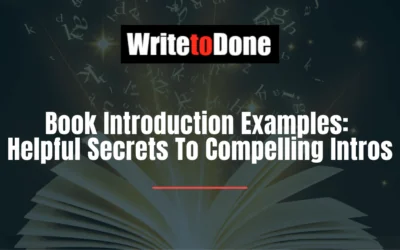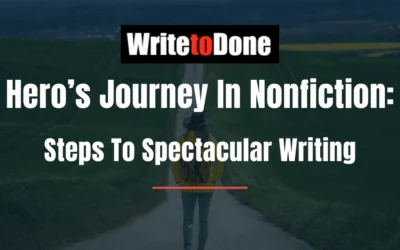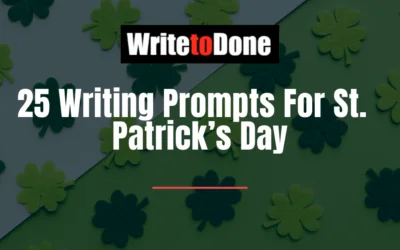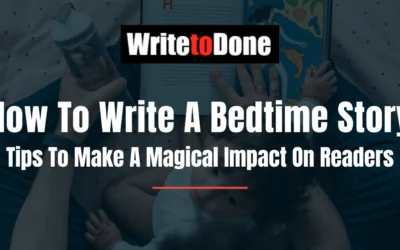Do you want to master the art of narration?
I have yet to read an all-dialog novel.
In fiction, narration is critical for establishing many elements, including scenery, character appearance, and action.
Despite (or perhaps because of) its importance, smooth narration is one of the hardest skills for an aspiring writer to master. It’s easy to get lost in long, flowery paragraphs of clever prose stuffed with adjectives, adverbs, undecipherable in-jokes, and repetition.
While I believe that narration must be mastered by the individual author, I hope that these tips — hard-learned in my own life of writing — will make the process a lot clearer and a little less embarrassing.
1. Show, Don’t Tell
I think that for a lot of people, this popular and sometimes over-quoted rule of thumb is hard to apply. Here’s my trick: Picture the sentence as if it were part of a scene in a movie.
(To be clear, the motivation behind ‘Show, Don’t Tell’ isn’t to ease the process of gaining movie options — though I doubt it would hurt your chances — but to make it more enjoyable to read. An ideal work of fiction takes place in the reader’s mind as a ‘little movie’, and making this ‘words to pictures’ translation as smooth as possible is one of the marks of a good writer.)
ex. 1. His hair was red and bushy.
This fits fine; you can easily picture a man with red, bushy hair.
ex. 2. He had inherited his peculiar hair color from a long ancestry of redheads.
This doesn’t translate. How would you incorporate that genetic tidbit into a visual medium such as a movie?
There are four ways (that I can think of) to convert this sort of sentence from ‘telling’ to ‘showing’.
a. Dialog
Almost everything you want to establish can be mentioned by some character, as long as you can contrive a conversation in which it’s mentioned.
ex. 3. “George, is that your natural hair color?” “Of course not. The Hildebanks have been fiery-locked since the days of Moses.”
This technique, however, has two flaws. If you’re trying to convert large amounts (say, an introductory narration) into dialog, you may have to write long, brand-new passages of such (and making interesting dialog is a skill in itself).
My first real novel project was 75,000 words long at the end of the first draft. I took a break, read some manuals on writing, came back, and almost tripled the word count to 220,000 words (yes, Harry Potter territory). The biggest source of all that healthy bulk: Turning simplistic ‘this is how it is’ narration into entire scenes of mostly dialog, which, if I do say so myself, made the book much more entertaining. The revision process, however, took almost two years.
The second flaw is that if you’re passing on ‘godlike’ information (in other words, knowledge the characters aren’t aware of yet, such as ‘whodunit’ in a mystery, or in the above case, that George will soon lose all his prized curls in a freak cigar accident), dialog isn’t a logical outlet, since none of the characters can talk about it yet.
b. Thought
If, in your story, you’re not afraid to get into characters’ heads and show their thoughts, then information can be revealed this way. When I visualize these ‘thinking’ scenes, I hear the thoughts as narration.
ex. 4. I can’t wait to tell Matilde about my hair, George thought giddily. I’m sure she’ll be excited to know that scarlet curls have been a signature of my family since ancient times.
This technique carries the same flaws as dialog: large amounts of it can be tedious to write and read, and it’s hard for a character to think about information he or she is not aware of yet.
c. Solidify
Can’t picture it as a part of your movie scene? Put it in, then! Many abstract concepts can be expressed by creating an object or event that carries the same meaning.
ex. 5. As George marched down the regal main hall of his mansion, he noted in turn each of the many portraits of his blaze-headed ancestors.
d. Narration (also called: Cheating)
You can always just throw off all this and have your little movie be narrated. However, I would advise against this unless your narrator has personality.
In my own first book, the main character and first-person narrator is a clever, sarcastic teenage girl (I say with all seriousness that she’s nothing like me) whom I wouldn’t dream of repressing. Should it ever be brought to a visual medium, I want to find a narratress as sardonic and cagey as she.
Note: Did you notice that I never did resolve the “godlike information” problem? That’s because I don’t believe in using such information — unless, of course, I have a godlike narrator (see also, one of my favorite movies, Stranger Than Fiction). If you’ve written a book around disclosing juicy, secret details to the reader, maybe you need to write scenes around said details, rather than simply tossing them into the narration.
2. Trim Excess Words
I have a rather scary proposal for you. Open up your most recent fiction writing project (well, this tip works for nonfiction, too, I suppose). Start with the first sentence. Take out the first word and read the sentence. Does it still make sense and carry the same idea across? Yes? Then leave it out.
Repeat.
You’ll probably get about two paragraphs in before realizing two things: “This is the most tedious chore I’ve ever done, and I’ve copied from the dictionary,” and “Wow, this is really making a difference.”
I’m not saying you’ll have to check every single word in your novel (although, if you have the patience for it, it would probably do the book a lot of good). All I suggest is that you do a page a day, and that you take notes. Keep track of which words you delete. Look for patterns. Make a list of words you consistently delete, which will narrow down your later searches to a simple Find/Replace.
The motivation? The only people who care about a novel’s word count are publishing company editors and people who’ve actually read War and Peace. Everybody else (you know, all us normal people) want as few words to slog through as possible. Concision (somewhat ironic definition: “Terseness and economy in writing and speaking achieved by expressing a great deal in just a few words”) is an invaluable trait and will make your writing memorable.
3. Use Only One Tense
Not only must you being careful not to switch tenses in the middle of sentences, but you must be on the lookout for words that subtly confuse the tense of the sentence. Here’s my list (which only apply in past-tense narration), but I might be forgetting a few.
a. Now
ex. 1. All the pictures and words it had contained were now etched across his memory.
Take a close look at that sentence. Does ‘were now’ really make any sense at all? ‘Were’ is the past-tense form of ‘are’; ‘now’ is about as present-tense as you can get.
The fix is usually to delete the word — it’s rarely even needed. In cases where it indicates a transition (ex. “He was quiet before; now he began to scream.”), require case-tailored replacements such as ‘then’, ‘at that moment’, or ‘suddenly/abruptly’.
b. This
ex. 2. I shrugged nervously, embarrassed at having told a total stranger this stupid little detail about myself.
For me, this one is a repeat offender. Maybe it’s my studies of the Japanese language, but I’ve grown used to the idea of ‘this’ being something within reach (literally and figuratively) while ‘that’ is something distant. In a narrative such as this (see?) one, the events are distant from the narrator (since they’re in the past).
The solution? Almost invariably, simply replace with ‘that’ or ‘it’.
c. These
ex. 3. The most confusing part, to him, was that even as Tep spoke these old, hateful words, his voice was tired and sad.
Mostly the same as ‘this’. Replace with ‘those’ or ‘they’ in most cases.
d. Here
ex. 4. He had not seen another Padaain since he had come to Ausi, but here one was, hunched over as if in pain, teeth gritted.
As with ‘this’ and ‘that’, ‘here’ and ‘there’ define the proximity of the object. Changing to ‘there’ usually suffices, but it might occasionally require more complex replacements or even a complete rephrasing of the sentence.
4. Put the Important Stuff First
Roy Peter Clark wrote of ‘branching to the right’ as the first item in his ’50 Writing Tools’ series of articles on Poynter.org. They’ve since been taken offline and compiled into a book; if you never read the articles, I encourage you to get a copy of the book and memorize it.
He summarized ‘branching to the right’ in this way: Begin sentences with subjects and verbs, letting subordinate elements branch to the right. Even a long, long sentence can be clear and powerful when the subject and verb make meaning early.
ex. 1. Spending the last of his money on a middle-aged black mare, Tep led it out of the stable as quickly as he could.
In the above example, I’ve bolded the verb (‘spending’) and subject (‘Tep’). Notice how far apart they are. This detracts from the power of the sentence, because while you can picture the verb (someone dropping money on a counter, for instance), you don’t know who’s doing it until later in the sentence. This forces the reader to suspend the ‘movie’ in their head for several seconds, which can be jarring in the midst of a good narrative.
ex. 2. Tep spent the last of his money on a middle-aged black mare and led it out of the stable as quickly as he could.
Now the subject and verb are as close to each other as possible, immediately designating both the subject and verb. Everything else in the sentence sprouts from these.
Conclusion
Applying these four tips to your manuscript can have an immediate effect on its readability, but they’re not nearly all that’s needed for a professional-sounding narration. I’ll continue taking notes, and hope to someday post even more.
In the meantime, I hope that these four tips for fiction writers help you in your writing. Let’s wish each other luck!
Note: The examples for #1 were pulled straight out of my butt. The ones for #3, however, were taken from my own first real novel, The Golden Sands.
















